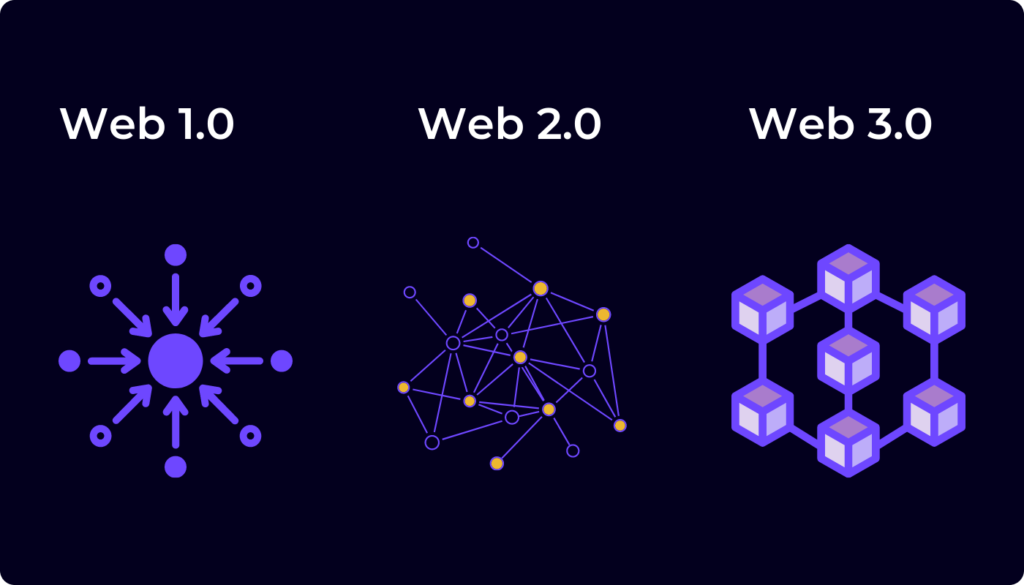Web 3.0, also known as Web3, represents the next evolution of the World Wide Web. Originally coined by Ethereum co-founder Gavin Wood in 2014, this term signifies an envisioned future internet that shows substantial shift from the data models of Web 1.0 and Web 2.0. While these previous versions had centralised data control and passive user interaction, Web 3.0 proposes a decentralised, interactive, and adaptive model of the internet [1][4].

This new version of the internet emphasises decentralisation, utilising blockchain technology and other distributed ledger technologies to ensure data integrity and prevent the concentration of power held by few corporations or entities. This aligns with the “read-write-own” ethos of Web 3.0, where users not only interact with information but could have ownership and financial stake in digital communities [2].
A notable feature of Web 3.0 is the integration and importance of cryptocurrencies, Non-fungible Tokens (NFTs), Decentralised Autonomous Organisations (DAOs), and decentralised finance. These technologies are expected to reshape online transactions and content creation, providing avenues for peer-to-peer interactions without the need for intermediaries [2][5].
Artificial Intelligence (AI) and Machine Learning (ML) are also significant elements of Web 3.0. They empower the web to be more intelligent and adaptive, contextually understanding user needs and delivering customised information and services. Additionally, with the use of semantic metadata, the web can understand the context of the information, enabling a more highly intuitive and interactive user experience [4][6].
Web 3.0 also puts a strong emphasis on privacy and security. It proposes the radical transformation of data storage and accessibility through distributed and decentralised networks. It is designed to safeguard against undue censorship and misuse of data, ensuring that users have more control over their online identity and digital assets [7].
Despite the considerable appeal of Web 3.0, it’s important to emphasize that it is still in its early stages. The change will not occur overnight, but the foundational technologies and systems are being developed and implemented. This journey towards a more decentralized, participatory, and intelligent web holds the potential to drastically transform how we interact with digital spaces, pushing the boundaries of what the internet can be in the coming years [1].
Web 3.0, or Web3, offers several advantages and potential disadvantages:
Pros:
- Greater Control Over Personal Data: With Web3, individuals have increased control over their personal data and online identities. This is due to the decentralized nature of Web3, which doesn’t rely on a central authority for data management (source).
- Enhanced Connectivity: Web3 provides expanded data connectivity, with technologies such as the semantic web improving the interlinking and sharing of online information (source).
- Enhanced Security and Privacy: The decentralized nature of Web3 provides potential privacy benefits to users that were not possible in prior generations of the web. Web3 uses blockchain technology, which offers decentralized and secure transactions and data storage (source).
Cons:
- Scalability: The current infrastructure of Web3 and blockchain technology sometimes struggles to scale effectively, which could create challenges as usage increases (source).
- Complexity: Using and understanding Web3 technologies can be complex, particularly for users who are not tech-savvy. Moreover, the complexity of foundational Web 3.0 technologies makes it a challenge for individual users to keep their activities secure (source).
- Regulatory Concerns: The decentralized nature of Web3 also leads to potential regulatory concerns, as it can be difficult to establish jurisdiction or enforce laws and regulations in this paradigm (source).
References:
[1] TechTarget, “What Is Web 3.0 (Web3)? Definition, Guide and History”: https://www.techtarget.com/whatis/definition/Web-30 [2] Harvard Business Review, “What Is Web3?”: https://hbr.org/2022/05/what-is-web3 [3] Ethereum.org, “What Is Web3 and Why Is It Important?”: https://ethereum.org/en/web3 [4] GeeksforGeeks, “Web 3.0 and Its Features”: https://www.geeksforgeeks.org/web-3-0-and-its-features/ [5] AWS, “What Is Web3? – Web3 Explained”: https://aws.amazon.com/what-is/web3/ [6] Coursera, “What Is Web3? (+ How Does It Work?)”: https://www.coursera.org/articles/web-three [7] Changelly, “What Is Web 3.0? Definition”: https://changelly.com/blog/what-is-web3-0/








